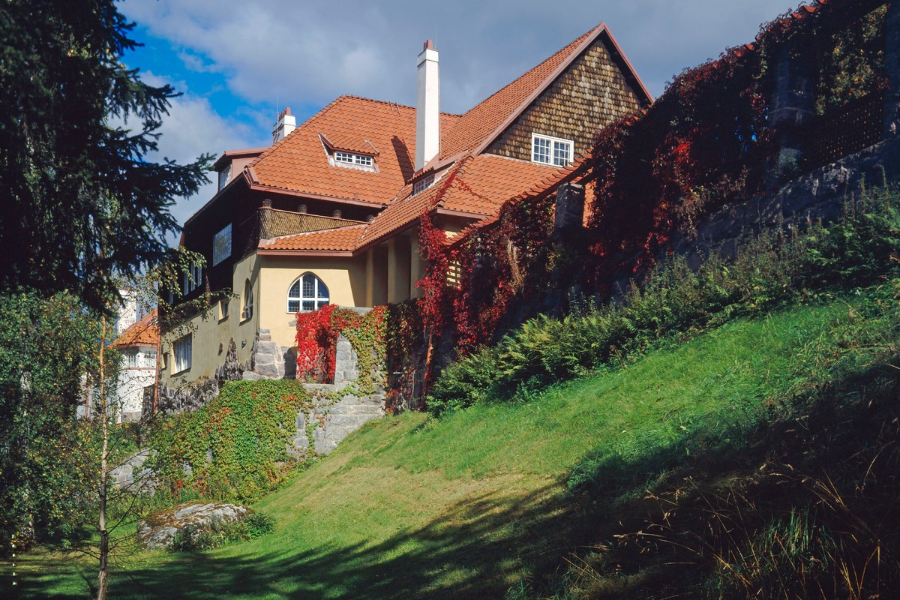The architectural firm of Gesellius, Lindgren, Saarinen was founded in 1896, and from the outset was given demanding assignments. The Finnish pavilion designed in 1889 for the 1900 Universal Exhibition in Paris gained international renown thanks to this firm.
In Finland, the architects enjoyed success with public buildings such as the Pohjola insurance company and the National Museum of Finland. For residential and commercial buildings, the office created a new style, best represented by the Doctors' House in central Helsinki (Fabianinkatu 17). Some of the first villas designed by the trio included the S. Wuorio villa and the Paloniemi mansion. However, the office's villa architecture culminated in Hvitträsk and the Suur-Merijoki mansion, which manifest the idea of a total work of art. The office was practically disbanded at the turn of 1904-05, but the name remained until the end of 1905.
History - Hvitträsk through the years
1901 Architects Herman Gesellius, Armas Lindgren and Eliel Saarinen purchase the Marievik plot on Lake Vitträsk in Kirkkonummi. The annex, also known as the Petite Villa, is completed.
1903 The main building is completed. Eliel moved into the south wing with his wife Mathilda; Lindgren and his family into the north wing and Gesellius into the Petite Villa.
1903-1905 Residence and studio of Gesellius, Lindgren and Saarinen. Eliel and Mathilda divorced. Both were united in a new marriage on March 6, 1904: Eliel with Gesellius's sister Loja, and Mathilda with Gesellius. The Lindgren family moved to Helsinki in 1905.
1905-1916 Residence and studio of Gesellius and Saarinen. The Gesellius family lived in the north wing.
1916-1923 Saarinen's summer residence. The north wing was rebuilt to a design by Eero Saarinen in 1929-36. Johannes and Rita Öhqvist looked after Hvitträsk all year round.
1949-1968 Luxury residence of Anelma and Rainer Vuorio. The Saarinens sold Hvitträsk to the Vuorios in the summer of 1949. Vuorio went bankrupt; Hvitträsk came into the possession of the Kansallis-Osake-Pankki bank in 1968.
1968-1969 The Gerda and Salomo Wuorio Foundation bought Hvitträsk from the Kansallis-Osake-Pankki bank. The chattels were sold at auction in 1969. The main building was renovated into a museum, Little Villa into a restaurant and café, and the north wing later into a hotel.
1971 Hvitträsk, under the care and ownership of the Gerda and Salomo Wuorio Foundation, is open to the public.
1981 The Finnish state buys Hvitträsk. The Ministry of Education and the Hvitträsk Foundation were in charge of the museum.
1996 Repair, modification and restoration work begins on the residence and museum workshop under the direction of interior architect Markku Nors. The National Board of Antiquities participated as an expert.
1997-1998 The museum gardens were restored according to plans by landscape architect Gretel Hemgård.
1999 The museum closes in autumn for renovation.
2000 Early in the year, Hvitträsk was transferred to the National Board of Antiquities and opened to the public after renovation in May 2000.
2002 The north wing was renovated for seminars and conferences.





















